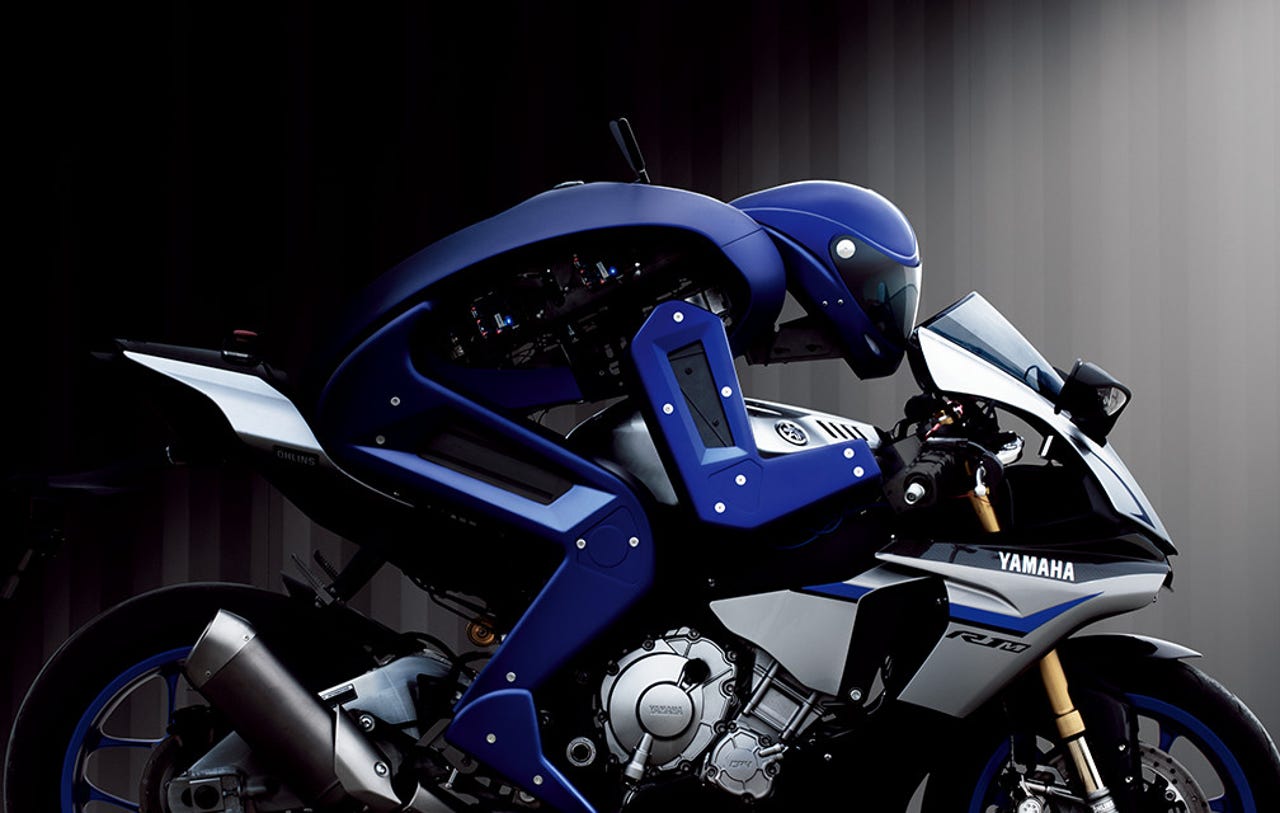This motorcycle-riding robot is trying to set a speed record


Robotics
In partnership with Yamaha, robotics developer SRI has created a humanoid that can ride an unmodified motorcycle. The goal? Beat the lap times of one of the most successful motorcycle racers of all time, Valentino Rossi.
It's an exquisite challenge. Motorcycle racing is about the most thrilling lesson in physics and material science imaginable. In order to turn a motorcycle, riders need to lean. The greater the lean, the tighter the turn. Thanks to some truly extraordinary tires, riders flirt with the terminal edge of physics at screaming speeds during race laps, leaning their bikes far enough to scrape knees, shoulders, and elbows.
Motorcycle races are a great way to show off the capabilities of modern bikes, but an even more extraordinary exhibition of the most sophisticated CPU, sensor, and manipulator combo on the planet: the human brain and body. When combined with a high performance motorcycle, the display is stunning, savage, and poetic.
SRI and Yamaha want their motorcycle-riding robot to outdo a human rider―and not just any human rider, but the best. It's an interesting test case precisely because the prowess of the robot is directly measurable against that of the most talented human for the prescribed task. And unlike the amusing showdown between IBM's Watson and quiz-champ Ken Jennings, there's plenty of reason to wonder if MOTOBOT will be successful.
The big difference between answering Jeopardy questions and riding a motorcycle is the presence of a definable upper limit on how fast a given motorcycle/rider can possibly complete a lap, which is a function of engine output, aerodynamics, and the physical constraints of the lean. The best laps by the best riders get awfully close to a natural ceiling.
So how does MOTOBOT work? The humanoid, which sits atop a motorcycle just like a human rider, has six actuators that enable it to operate a motorcycle's basic controls: steering, throttle, front brake, rear brake, clutch, and gearshift pedal. Based on data for vehicle speed, engine rpm, machine attitude, etc., MOTOBOT controls its actuators to autonomously operate the vehicle.
The lean: a hair-raising display of man's flirtation with the limits of physics.
Currently, MOTOBOT can do 100 Km/h (~62 MPH) straightaways and limited turning. The autonomously bot controls all the motorcycle dynamics, including staying upright and keeping stable during acceleration and deceleration. Looking ahead, the goal for 2017 is to lap a racetrack at an average of 200 Km/h (~124 MPH).
High-precision GPS and machine learning will be utilized to enable MOTOBOT to make decisions regarding the best lines to take around a racetrack and to know the limits of the motorcycle's performance. The bot should be able improve its lap times with successive laps of the track.
Yamaha hopes this project will enable its engineers to visualize data about human motorcycle operation, deduce the relationship between rider input and machine behavior, and then use the resulting know-how in developing better, more responsive vehicles.
Of course Yamaha doesn't just make motorcycles. By altering MOTOBOT's control programming and the shapes of its operating mechanisms, the company anticipates being able to adapt it ride other vehicles like personal watercraft and snowmobiles.